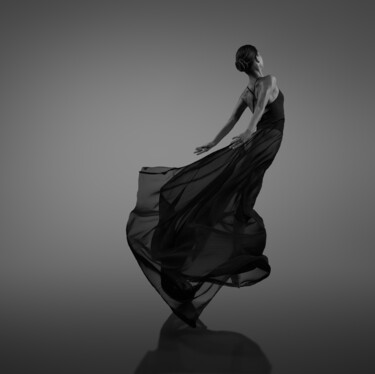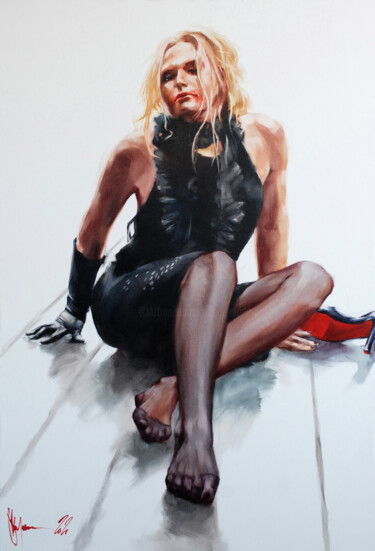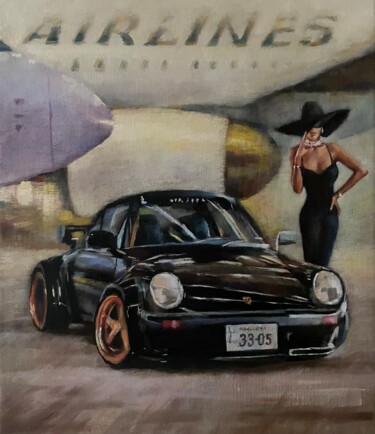 TENDERNESS (2023) Painting by Elena Mi.
TENDERNESS (2023) Painting by Elena Mi.
Brief introduction
Throughout the long and controversial narrative of art history there was a time, to be located roughly from the beginning of the events of human existence until the arrival of the Avant-gardes, when lips were mainly immortalized within the faces of the effigies, to become autonomous subjects through the subsequent figurative investigation of artists such as Man Ray, Andy Warhol, Joseph Tilson, Pino Pascali, Tom Wesselmann and the more contemporary Agnieszka Polska. Precisely through these last names it will be possible for me to illustrate distinct approaches to the aforementioned subject matter, which is aimed at fragmenting into three "sections," which I have classically divided by current of belonging, artistic technique, as well as a bolder climax of passion. Finally, it will be the aforementioned great masters, each time, who will lead me back to the figurative narrative brought forth by Artmajeur's artists about the lips.
" LIPS POP PINK PPP" (2022) Painting by Pierre Olié.
 LUSCIOUS LIPS, THE KEY TO SUCCESS? (2023) Photography by The Imaginati.
LUSCIOUS LIPS, THE KEY TO SUCCESS? (2023) Photography by The Imaginati.
Lips and Surrealism: Man Ray, Agnieszka Polska and The Imaginati
Starting with the artistic current, it goes without saying how from the figurative investigation developed by Surrealism, focused on revealing mainly the most remote and imaginative mechanisms of the human mind, one can expect anything, so much so that it would be possible to concretize on a pictorial support the vision of a mouth, which, like a kind of ambiguous flying UFO, moves slowly through the sky, just as if it were observing from above with which human beings it might stop to engage in an eccentric conversation. In fact, my reveries about life forms of the third kind almost take shape in The Lovers (1936), Man Ray's masterpiece in which isomorphism is realized through a realistic illusion, this time conceived not to narrate the arrival of an alternative existence, but to allude to a key concept of Surrealist philosophy, that of the devouring woman. The very latter image, which is manifested through the illustration of red lips, not only pursues the intent of reinventing the female physiognomy, but also takes the opportunity to highlight its "dangerous" emancipation, to be understood as the ability to disappear and be as fleeting as a quick flying kiss. Finally, doing some healthy gossip, I assimilate this article to the most talked-about women's magazines, quivering to reveal how The Lovers was actually conceived to exorcise the passionate affair, which the American artist had with the comely photographer and model Lee Miller, so much so that the painted lips are said to be those of his former lover, intended to take the form of the regretful continuation of an ever-vivid physical desire. Speaking of contemporary art, on the other hand, Man Ray's tale seems to continue in the artistic investigation of the Polish artist Agnieszka Polska, who wanted to repropose a kindred female mouth in the projection I Am the Mouth, a work designed to make the viewer reflect on the ambiguity of understanding visual imagery, a theme that, also dear to the Surrealists, is this time understood in the sense of the relationship between verbal language and science. Indeed, the disembodied red lips in question are caught while intent on repeating soothing refrains, having the intent to allude to the strange Internet phenomenon of ASMR (Auto Sensory Meridian Response) videos. Finally, it seemed natural to me to compare this latest "technological" vision of the mouth with the "mechanical" photograph The Full Lips, the key to success? of The Imaginati, a professional photographer from Artmajeur, whose work represents an inseparable combination of photography and digital, aimed at producing works having the purpose of astonishing the viewer, in a manner analogous to how the aforementioned surrealism did. In addition, from the latter artistic current, the title of The Imaginati's work has also "inherited" a reflection on the anthropological evolution of feminism, revealing that, if lipstick used to be enough for emancipation, today there is a greater focus on the size of the mouth, an attribute, which, if particularly fleshy, drastically increases a woman's persuasive power. Finally, returning for a moment to technology, it is necessary to highlight the purpose that the artist of Artmajeur carried out during the creation of the above work, that is, to explore the infinite possibilities of the digital medium, to bring it to its multiple expressive potentials, within an artistic production often aimed at trying his hand, both in abstraction, and in the original "recreation" of the works of the best-known artists, in this case recognized by me in the guise of Man Ray and Agnieszka Polska.
 SELF-PORTRAIT NUMBER 10 (2023) Photography by Aly-N.
SELF-PORTRAIT NUMBER 10 (2023) Photography by Aly-N.
 MADNESS 01/20 (2021) Photography by Bettina Dupont.
MADNESS 01/20 (2021) Photography by Bettina Dupont.
Painting, silkscreen printing, and photography: Andy Warhol, Joseph Tilson, and Bettina Dupont
As anticipated, the second section of the narrative on lips does its best to analyze the latter's features through the analysis of three artistic techniques, namely that of painting, silkscreen printing, and photography, which, during the most Pop period in art history, namely the 1950s and 1960s, found themselves particularly in agreement in terms of subjects of interest. This "fusion" occurred because at the time photography was definitely influenced by the predominant pictorial and silkscreen language, mainly aimed at combining early avant-garde artistic strategies with the best-known mass media images. In any case, even the brush proved mutually interested in the lens, so much so that the school leader Warhol was largely intrigued by the camera, an optical instrument that in recent times he used to carry with him everywhere he went. Returning to the discourse in regard to the photographic "debt," it was possible for me to demonstrate the continuity of the themes expressed by the latter art, with respect to painting and pop screen-printing, by comparing the artistic investigation of the aforementioned Warhol with the slightly later one of Joseph Tilson, as well as the contemporary one of Artmajeur photographer Bettina Dupont, also a creator of fleshy female mouths. Speaking of the first master, it was precisely in 1962 that he brought to life Marilyn's Lips (1962), a diptych that isolated and repeated Marilyn's lips 168 times, a vision aimed at "obsessively" enhancing a subject that, a vehicle of communication and seduction par excellence, has always fascinated the American master, who probably showed his interest from his earliest personal and commercial works, developing it in later portraits in which certain focal points of the face were emphasized. In addition, subsequent to 1962, Warhol again and exclusively immortalized that part of the body in 1975, the year of the creation of three different unique albums, in which the American master printed and pasted images of more than 60 different pairs of lips, generated through a rather unusual creative process, according to which the subjects were silkscreened onto various tapes, from duct tape to packing tape to scotch tape, and then placed and adhered to the page. A kindred vision arises from observing the Transparency Clip-o-Matic Lips silkscreen print (1967-8) by Joe Tilson, an artist who, at first a realist and marked by resolving the tension between serial production and the unique status of the artwork, unexpectedly sided with the commercial gloss of Pop art during the 1960s, resulting in a production of painted prints that, as one-of-a-kind editioned series pieces, celebrated consumer images with the seriousness of sacred works of art. As for the Clip-O-Matic Lips print, however, it, which was chosen as the cover of Christopher Finch's Dutton Pictureback book Pop Art, Object and Image, (1968), is part of a series of silkscreens aimed at highlighting only specific parts of the body, which, in the case of the aforementioned 1967-68 masterpiece, are summed up in the frontal view of two open red lips. Just a similar image that would seem to dilate into the "portrait" of a broader and fatter laughter, which, placed within the artist's photograph of Artmajeur, is reproposed, in a manner analogous to Warhol's "compulsive" one, in multiple specimens arranged on a white wall, aimed at ideally "echoing" the irrepressible expression of joy expressed by the girl placed in the foreground.
 FOUR LIPS (2016) Drawing by Al Ego.
FOUR LIPS (2016) Drawing by Al Ego.
 LIPGLOSS (2022) Painting by Luigi Notarnicola.
LIPGLOSS (2022) Painting by Luigi Notarnicola.
Climax of seduction: Pino Pascali, Tom Wesselmann and Luigi Notarnicola
We have come to the end of my figurative narrative, which is intended to conclude with a climax aimed at exalting the erotic nature of the mouth, which is first finely revealed by Pascali's calmness, then flaunted by Wesselmann's sensual language, and finally exaggerated and made dangerous by Artmajeur artist Notarnicola's painting. Beginning with the master born in 1935, Pascali, considered to be one of the most important exponents of arte povera, along with Michelangelo Pistoletto, Jannis Kounellis, Mario Merz, Alighiero Boetti, etc, was the creator, in 1964-65, of Primo piano labbra, an enamel on canvas made in a creative phase purely focused on the study and rendering of details of the female body, which, interpreted as magnified fragments, clearly felt the influence of American Pop art and the artist's connection with the Italian world of cinema and advertising. Still on the subject of this masterpiece, some critics recognize in the aforementioned type of research Pascali's later playful component, which, intertwined with the primary, atavistic and ancestral element, reinterprets the ancient Mediterranean myth of the great mother, characteristic of all his later production. As for Wesselmann, on the other hand, his most sensual artistic investigation is well exemplified by Mouth 8# (1966), the first permutation of the now iconic mouth series, which was even commissioned by the art director of Playboy, Arthur Paul at the time. The eroticism of the masterpiece is provided by the sensuality inherent in the vision of a mischievous tongue, playing "hide and seek" under young, white teeth, caught within a composition cleverly created to arouse passion, so much so that the artist himself revealed: "I chose to make a hugely cropped mouth to isolate and intensify the one part of the body that has a high degree of both sexual and expressive connotations, but then I painted a mouth with low degrees of each quality, to keep it, like the Playmate, somewhat shiny but inviting." Finally, fear takes the place of arousal, as the Lipgloss painting by the aforementioned artist from Artmajeur, depicting large fuchsia lips set against a black background, is meant to remind us, through the thorns placed on the rosy flesh, of the second and more tragic face of temptation: the moment when passion is succeeded by a more threatening and vulnerable feeling of love.



 Olimpia Gaia Martinelli
Olimpia Gaia Martinelli























